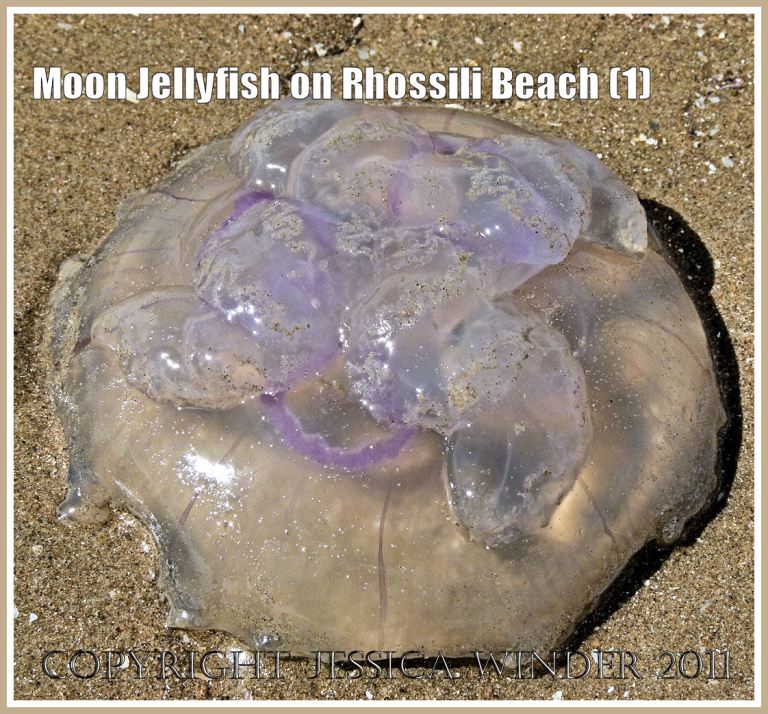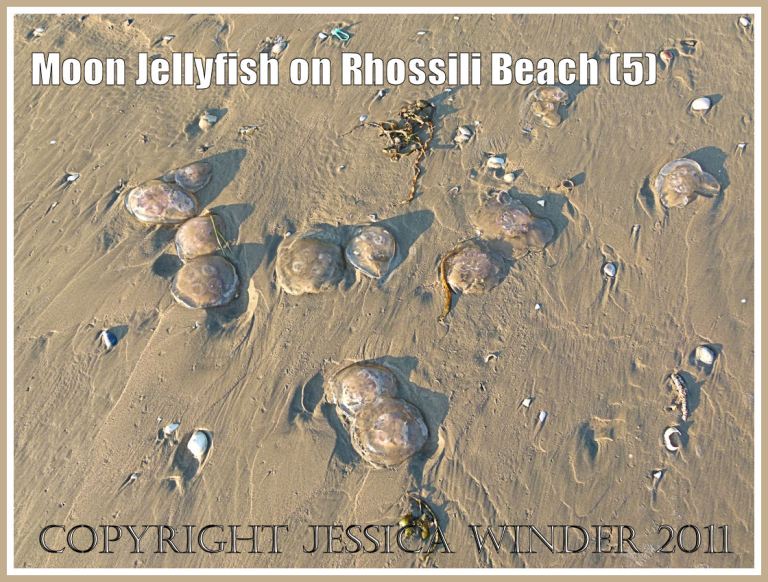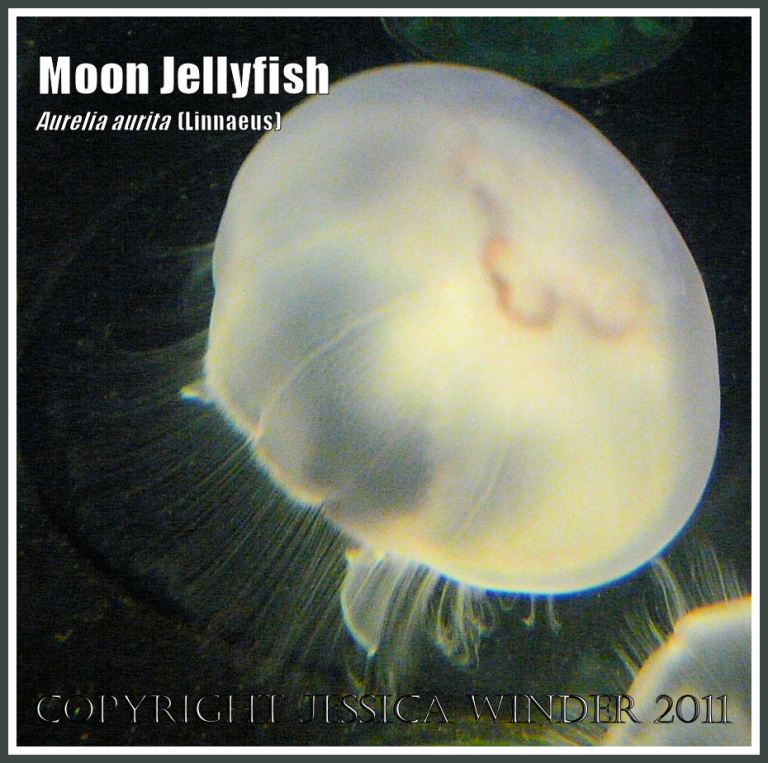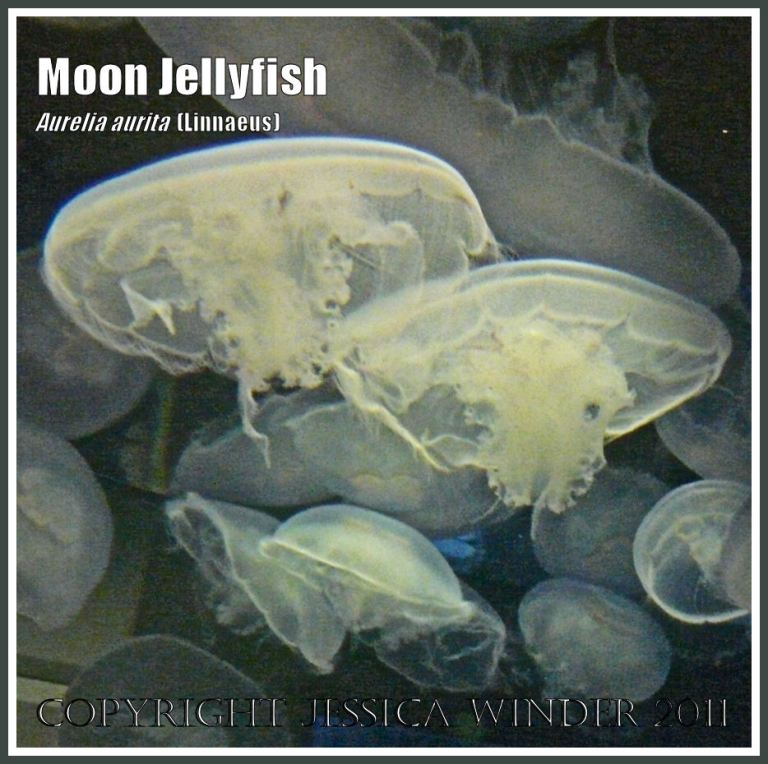Moon Jellyfish – Aurelia aurita (Linnaeus) – were stranded on the sandy shores of Gower in larger numbers this summer than I can recall in previous years. They are most attractive with their characteristic four pink rings (gonads or reproductive parts) in the middle of the transparent jelly. They are generally fairly harmless (I think) regarding stinging if you touch them. They are quite difficult to photograph well because sand usually sticks to the gelatinous matter, and they dry out easily and tend to look dull. Many of their features are obscured or missing when you find specimens on the beach. Sandhoppers just love them and soon descend in hordes to nibble on them. Here are a few pictures I took this summer when Moon Jellyfish washed ashore in quantity on the beach at Rhossili.
I also include some images (apologies for the poor quality) of the same species swimming in an aquarium where you can see how they would look in the sea with the fringe of fine tentacles around the rim of their umbrella shaped body, and the four arms hanging down from their under surface.
COPYRIGHT JESSICA WINDER 2011
All Rights Reserved







